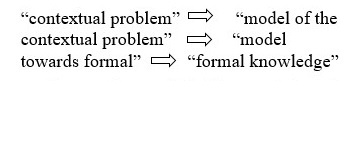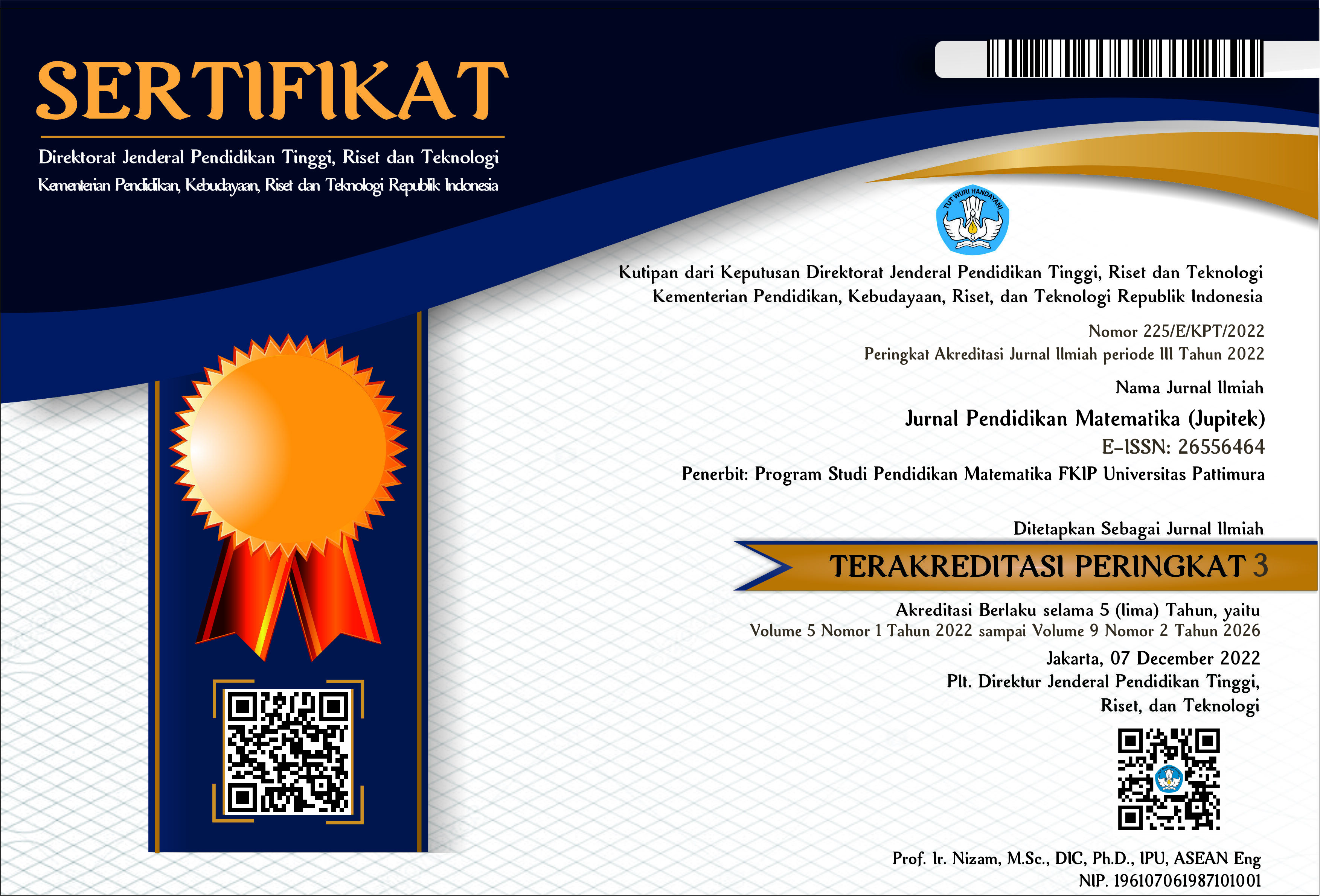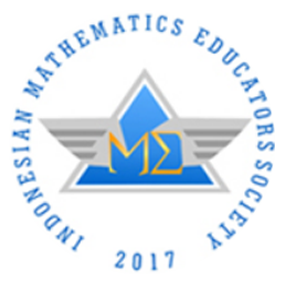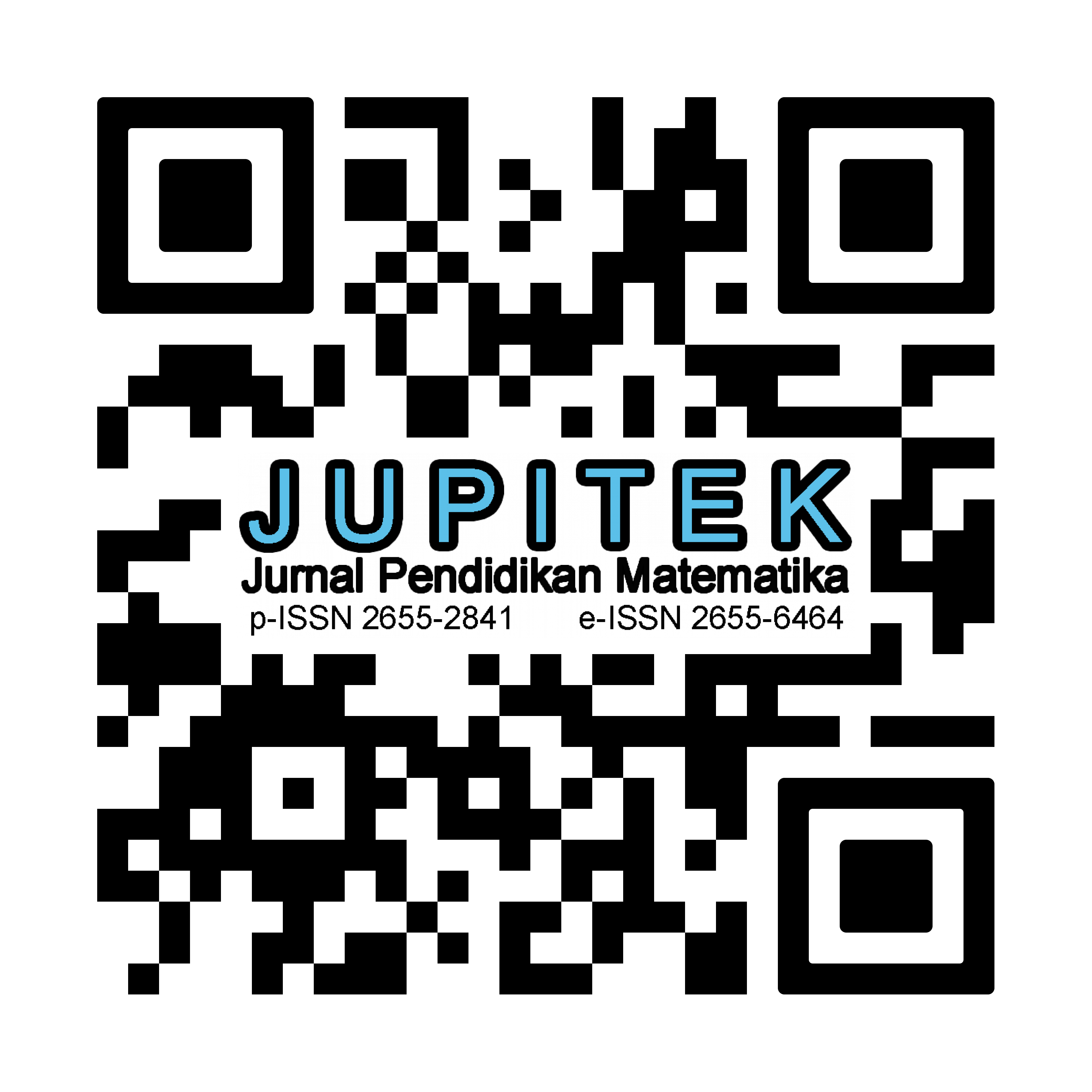THE DEVELOPMENT OF A REALISTIC MATHEMATICS APPROACHES TO SOLVE THREE-DIMENSIONAL SHAPES WITH CURVED SURFACES PROBLEMS
Abstract
This study aims to develop a validity of learning tools for the curved side space material for grade IX students of SMP in Ambon City in the 2021/2022 academic year using a realistic mathematics approach. The learning device development model used is to modify the 4-D model, which is limited only to the development stage, namely the learning device trial. The data in this study were analyzed quantitatively. The results showed that the learning device that used a realistic mathematical approach in problem-solving the build a curved side spaces problem met the valid criteria at the end of the test
Downloads
References
Arifin, Yusmin, E, Hamdani. (2017). Analisis Kesulitan Belajar Siswa pada Materi Bangun Ruang Sisi Lengkung Di SMP. Jurnal Pendidikan dan Pembelajaran Khatulistiwa, 6(4).
Deviani, R. Ramlah, Adirakasiwi, A. G. (2017). Analisis Kesulitan Belajar Siswa Pada Materi Bangun Ruang Sisi Datar. Prosiding Seminar Nasional Matematika dan Pendidikan Matematika (SESIOMADIKA).
Freudenthal, H. (1973). Mathematics as an educational task. Dordrecht: Kluwer Academic Publishers
Hadi, S. (2015). Pendidikan Matematika Realistik. Banjarmasin: Penerbit Tulip.
Lutvaidah, U., & Hidayat, R. (2019). Pengaruh Ketelitian Membaca Soal Cerita terhadap Kemampuan Pemecahan Masalah Matematika. JKPM (Jurnal Kajian Pendidikan Matematika), 4(2) 79-188
Mataheru, W., dkk. (2011). Pengembangan Perangkat Pembelajaran Matematika realistik Untuk Topik Perbandingan Pada Siswa SMP Hang Tuah Ambon. Hasil Penelitian.
Mataheru, W., Huwaa N. C., Matitaputty C. (2017). Writing Material Using Inquiry Oriented Discovery Method on Learning Mathematics. Proceeding International Seminar on Educatio. Volume 1.
Mataheru, W. (2019). Proses Kognitif dalam Pemecahan Masalah: Alfabeta. Bandung.
Nuraida, I. (2017). Analisis Kesalahan Penyelesaian Soal Bangun Ruang Sisi Lengkung Siswa Kelas IX SMP Negeri 5 Kota Tasikmalaya. Teorema: Teori dan Riset Matematika, 1(2), 25-30
Rosyida, E. M., Riyadi, R., dan Mardiyana, M. (2016). Analisis Kesalahan Siswa Dalam Pemecahan Masalah Berdasarkan Pendapat John W. Santrock Pada Pokok Bahasan Bangun Ruang Sisi Lengkung Ditinjau Dari Gaya Belajar Dan Gaya Berpikir Siswa. Jurnal Pembelajaran Matematika. 4(1).
Sugiyono. 2013. Metode Penelitian Pendidikan (Pendekatan Kuantitatif, Kualitatif, dan R&D). Bandung: CV Alfabeta.
Suwarsono. (2017). Beberapa Permasalahan yang Terkait dengan Upaya Implementasi Pendidikan Matematika di Indonesia. Makalah disajikan pada seminar RME di universitas Sanata Dharma Yogyakarta.
Thiagarajan, S., Semmel, D. S. dan Semmel, M. I. (1974). Instructional Development for Teacher of Exceptional Children. Bloomington: Indiana University.
Yuliana, R. (2017). Pengembangan Perangkat Pembelajaran dengan Pendekatan PMRI pada Materi Bangun Ruang Sisi Lengkung untuk SMP Kelas IX. Jurnal Pedagogi Matematika, 6(1), 60-67.
Yusmanita, S., Ikhsan, M., & Zubainur, C. M. (2018). Penerapan Pendekatan matematika realistik untuk meningkatkan kemampuan operasi hitung perkalian. Jurnal Elemen, 4(1), 93-104.
Yuwono, I. (2014). ”RME (Realistics Mathematics Education) dan Hasil Studi awal Implementasinya di SLTP.” Makalah Seminar disajikan pada Seminar Nasional Realistics Mathematic Education (RME) di UNESA Surabaya.

Copyright (c) 2022 Wilmintjie Mataheru, Novalin C Huwaa

This work is licensed under a Creative Commons Attribution-NonCommercial-ShareAlike 4.0 International License.
License and Copyright Agreement
By submitting a manuscript to Jurnal Pendidikan Matematika (JUPITEK), the author(s) certify and agree to the following terms:
- Originality and Authority: The submitting author is authorized by all co-authors to enter into this agreement. The manuscript describes original work that has not been published previously in a peer-reviewed journal, nor is it under consideration for publication elsewhere.
- Approval: Its publication has been approved by all author(s) and by the responsible authorities of the institutions where the work was carried out.
- Rights: The authors secure the right to reproduce any material that has already been published or copyrighted elsewhere.
- Licensing and Copyright: Authors retain the copyright to their work.
- License Grant: The authors grant Jurnal Pendidikan Matematika (JUPITEK) the right of first publication, with the work simultaneously licensed under the Creative Commons Attribution-NonCommercial-ShareAlike 4.0 International (CC BY-NC-SA 4.0).
- Self-Archiving: Authors are permitted and encouraged to deposit the published version of their article in institutional repositories, on their personal websites, and other academic platforms, with proper acknowledgment of its initial publication in Jurnal Pendidikan Matematika (JUPITEK).





.png)


